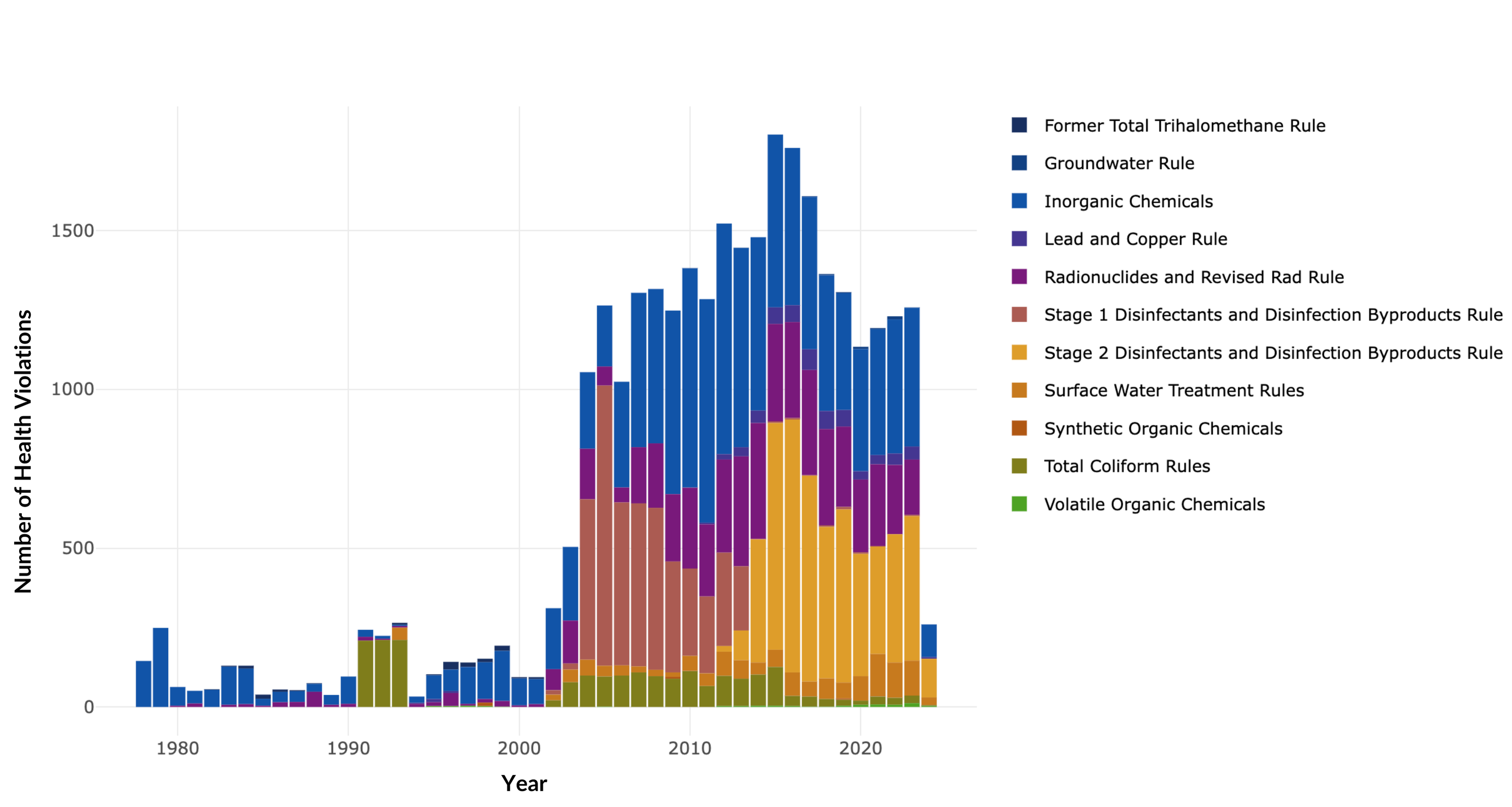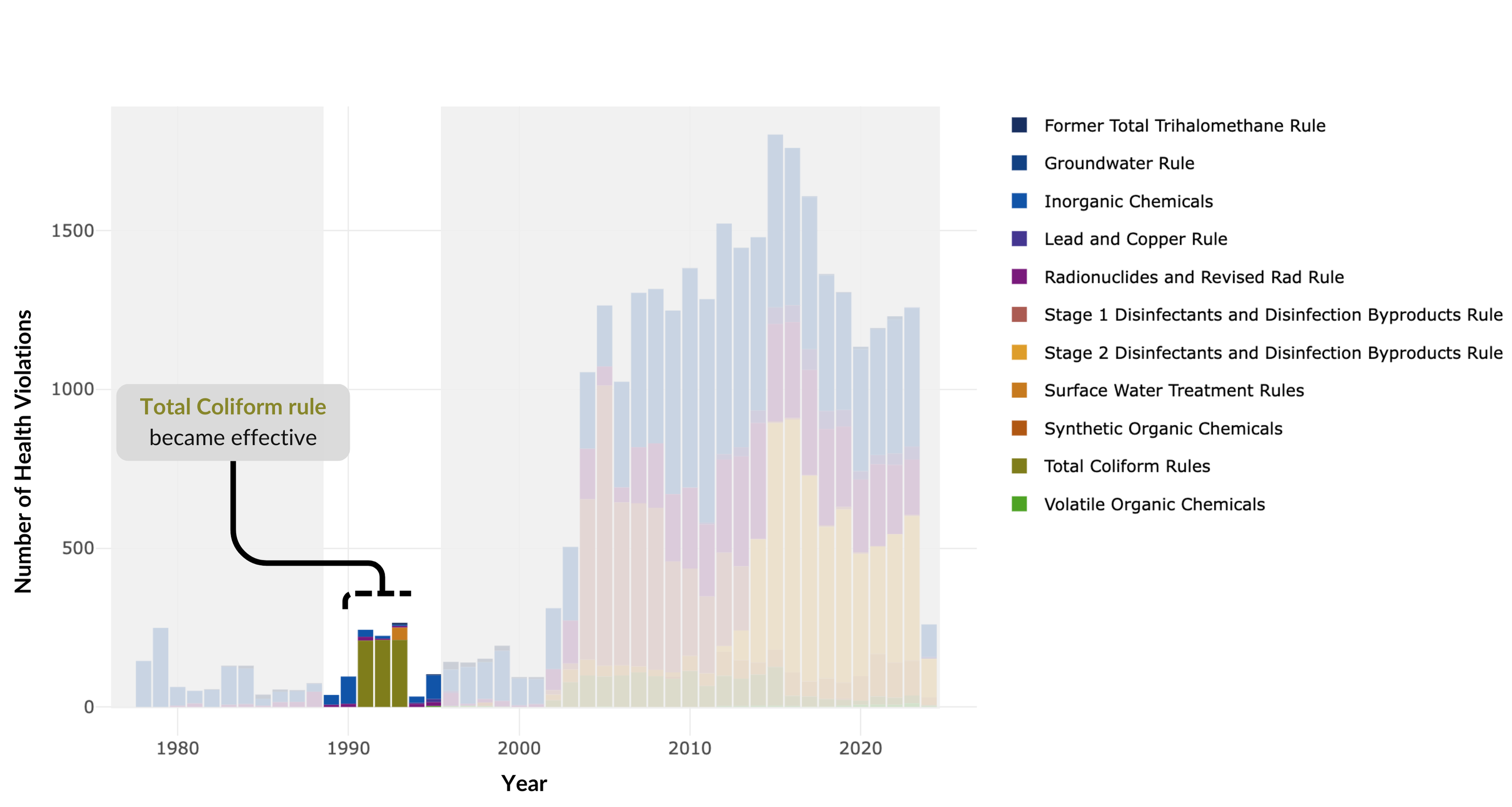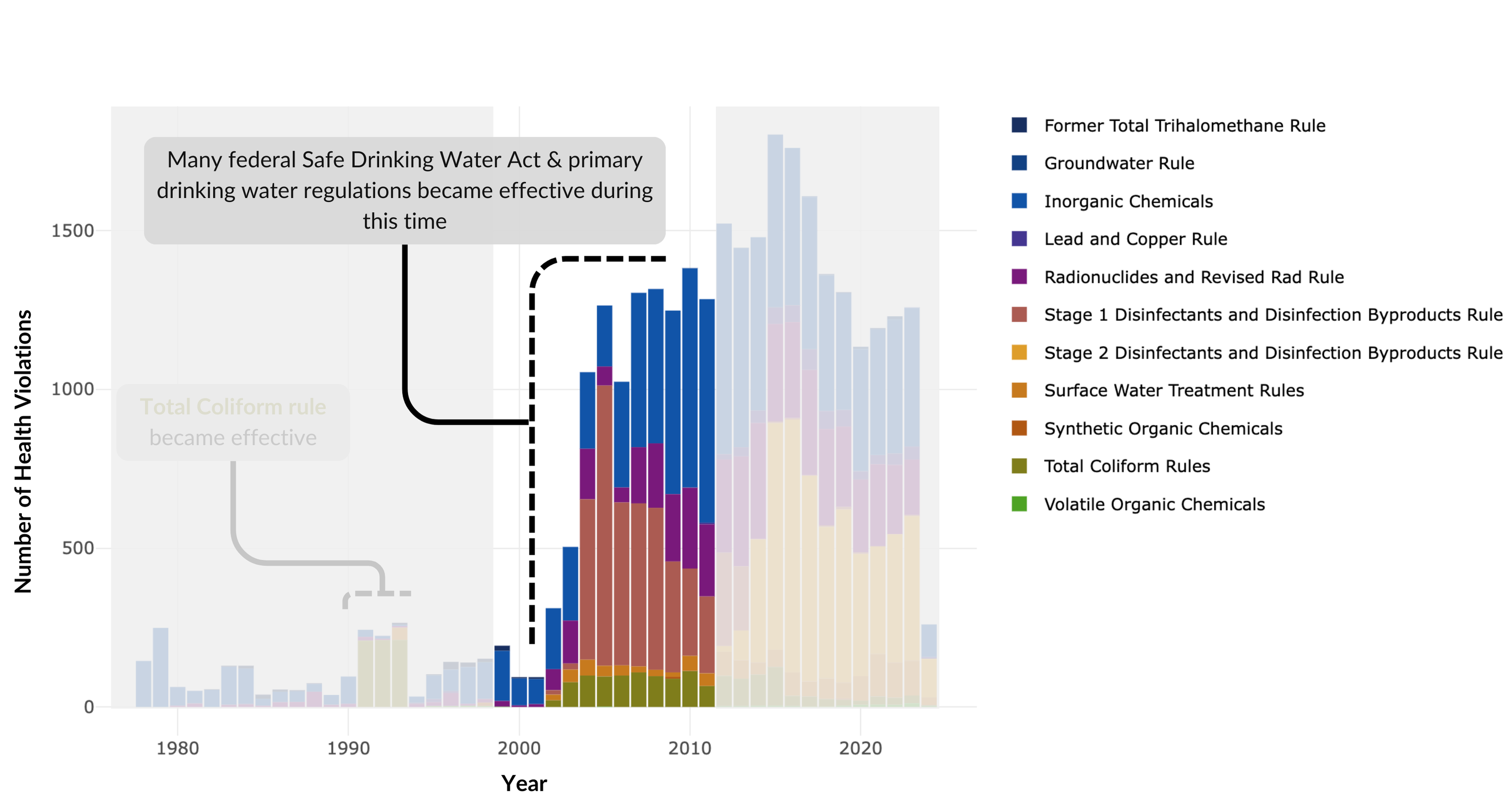Health-Based Drinking Water Violations 101
For example, let us look at health-based drinking water violations. Health-based violations are fairly common, with national data showing 1 in 10 Americans drinking water from a system that experienced health-based violations during the three-year period of 2018 to 2020 . Violations range from bacterial contamination to chemical safety breaches, and can, depending on the persistence and scope of the violations, be an indicator of a potentially failing system because they directly correlate with public health risks that undermine safe drinking water delivery. However, data on health violations is dependent on various factors, including enforcement rates, regulatory frameworks, reporting consistency, and real-world water system issues. To understand more, let us examine the growth of health-based violations in Texas from 1978 - 2024.
In this graph, the data says there is no doubt we are seeing more violations. But what does that mean? Are we actually witnessing a decline in water quality delivered to customers? The reality on the ground may be more nuanced.




